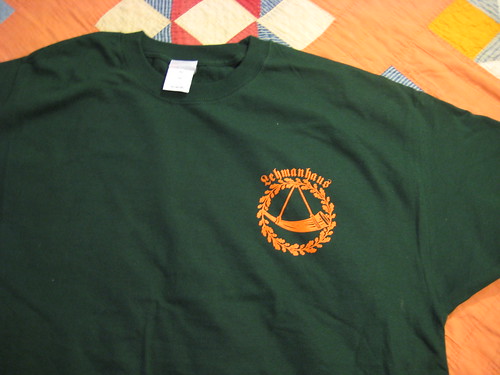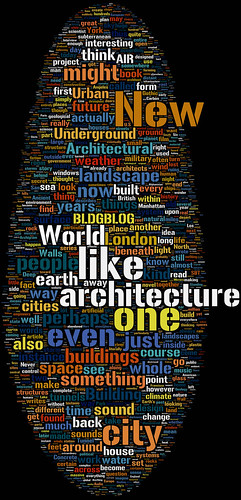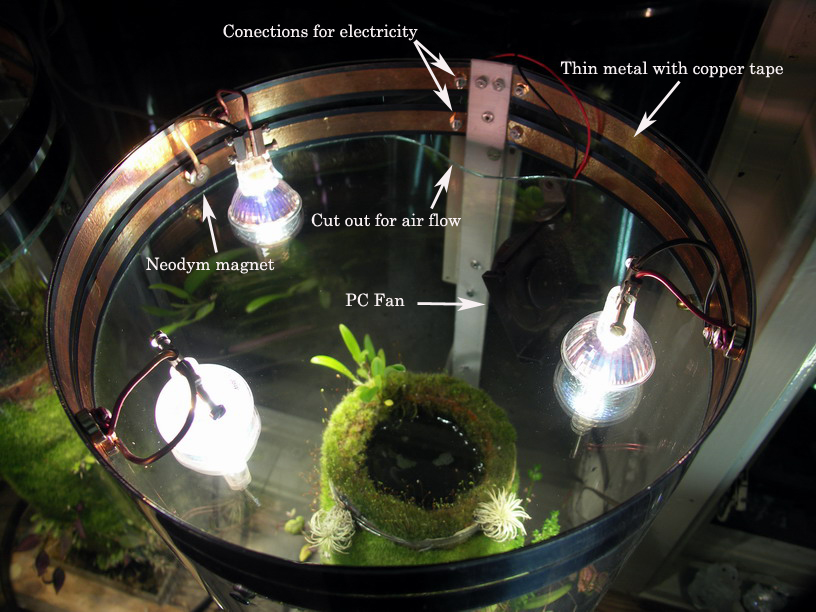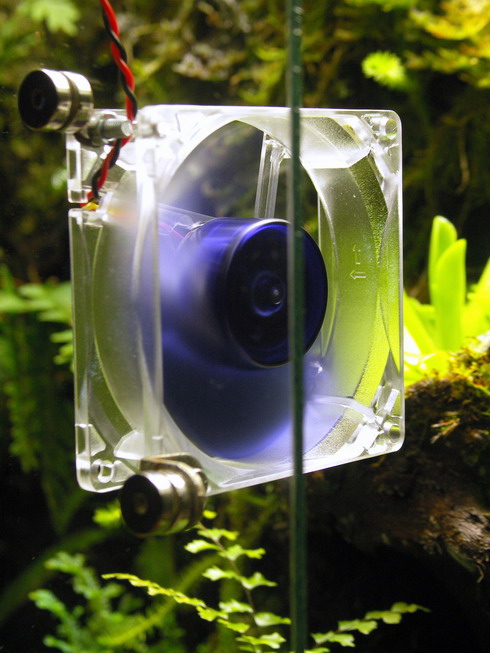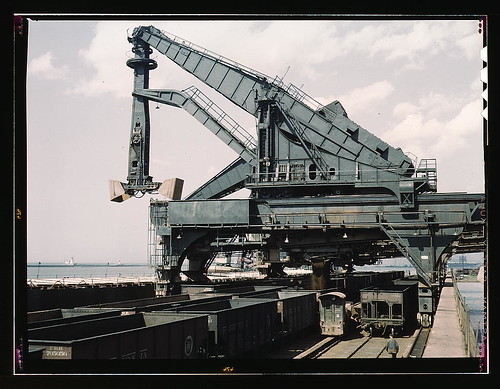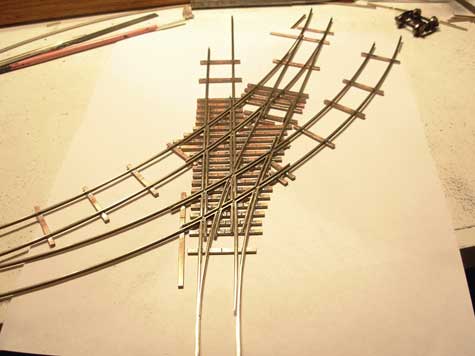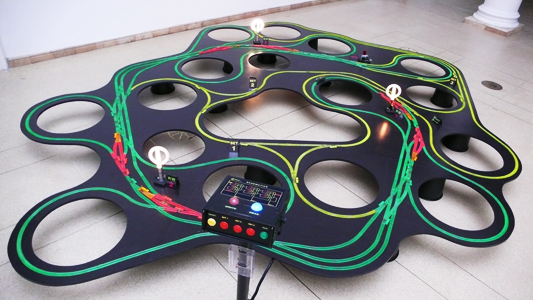Something to cheer us all up on a Saturday morning. First up, Dmitri Orlov’s Social Collapse Best Practices (a talk to the Long Now Foundation – audio and video ava).
If you still have a job, or if you still have some savings, what do you do with all the money? The obvious answer is, build up inventory. The money will be worthless, but a box of bronze nails will still be a box of bronze nails. Buy and stockpile useful stuff, especially stuff that can be used to create various kinds of alternative systems for growing food, providing shelter, and providing transportation. If you don’t own a patch of dirt free and clear where you can stockpile stuff, then you can rent a storage container, pay it a few years forward, and just sit on it until reality kicks in again and there is something useful for you to do with it. Some of you may be frightened by the future I just described, and rightly so. There is nothing any of us can do to change the path we are on: it is a huge system with tremendous inertia, and trying to change its path is like trying to change the path of a hurricane. What we can do is prepare ourselves, and each other, mostly by changing our expectations, our preferences, and scaling down our needs.
Something that I don’t see discussed enough is what a severe downturn (or depression or collapse, as we run up the intensity scale) means for social order. The last big bust didn’t exactly bring out the best in a lot of people – I don’t think it’s reasonable to expect folks to just accept being dealt a bad hand in a crooked game (mmm – long pork!). I don’t read Salon much any more, but this article – We’re on the brink of disaster – caught my eye.
Take China. So far, the authorities have managed to control individual “mass incidents,” preventing them from coalescing into something larger. But in a country with a more than 2,000-year history of vast millenarian uprisings, the risk of such escalation has to be on the minds of every Chinese leader.
On Feb. 2, a top Chinese party official, Chen Xiwen, announced that, in the last few months of 2008 alone, a staggering 20 million migrant workers, who left rural areas for the country’s booming cities in recent years, had lost their jobs. Worse yet, they had little prospect of regaining them in 2009. If many of these workers return to the countryside, they may find nothing there either, not even land to work.
Under such circumstances, and with further millions likely to be shut out of coastal factories in the coming year, the prospect of mass unrest is high. No wonder the government announced a $585 billion stimulus plan aimed at generating rural employment and, at the same time, called on security forces to exercise discipline and restraint when dealing with protesters. Many analysts now believe that, as exports continue to dry up, rising unemployment could lead to nationwide strikes and protests that might overwhelm ordinary police capabilities and require full-scale intervention by the military (as occurred in Beijing during the Tiananmen Square demonstrations of 1989).
And then there’s climate change. This New Scientist article talks about the implications of a 4°C rise in global average temperature.
If we use land, energy, food and water efficiently, our population has a chance of surviving – provided we have the time and willingness to adapt. “I’m optimistic that we can reduce catastrophic loss of life and reduce the most severe impacts,” says Peter Falloon, a climate impacts specialist at the Hadley Centre. “I think there’s enough knowledge now, and if it’s used sensibly we could adapt to the climate change that we’re already committed to for the next 30 or 40 years.”
This really would be survival, though, in a world that few would choose to live. Large chunks of Earth’s biodiversity would vanish because species won’t be able to adapt quickly enough to higher temperatures, lack of water, loss of ecosystems, or because starving humans had eaten them.
Things are not disconnected – it’s all interrelated. Assuming we haven’t already passed some climatological positive feedback tipping point, the current economic meltdown may moderate our output of greenhouse gasses. On the upheaval front – China, India, and Pakistan share borders and possess nukes. Pakistan is the loosest of cannons, but China has a long history of civil fun ‘n games (I believe it’s called ‘losing the mandate of heaven’). A Pakistan/India nuclear exchange would kill a lot of people and put a lot of dust in the air – what kind of feedback effects would a south Asia nuclear nightmare cause? If climate change continues, the Indian monsoon becomes unreliable and there’s instability to the north – what then?
I don’t know if it’s an American thing, or whether this goes on worldwide, but some folks rub their hands in eager anticipation of an impending apocalypse. Just so I’m clear – if you think a post-collapse landscape looks like a Frank Frazetta painting with you in a starring role – grow up. If statistics and experience are any guide, it looks like you (and me) face down in filthy stagnant water or curled up in a cold, damp corner with a high fever and bloody diarrhea.
Have a nice day!
Update – two other posts on the specifics:
A great article on Iceland – the whole financial mess writ small – Wall Street on the Tundra.
In reply to the Santellis of the world – the foreclosure mess in Cleveland. Yes, some people were incredibly irresponsible (see Irvine Housing Blog), but even in those cases it takes two to tango. Some lending practices, though, were just short of theft/fraud.
In other instances, mortgage brokers would cruise neighborhoods, looking for houses with old windows or a leaning porch, something that needed fixing. They would then offer to arrange financing to pay for repairs. Many of those deals were too good to be true, and interest rates ballooned after a short period of low payments. Suddenly burdened with debt, people began to lose homes they had owned free and clear.
As early as 2000, a handful of public officials led by the county treasurer, Jim Rokakis, went to the Federal Reserve Bank of Cleveland and pleaded with it to take some action. In 2002, the city passed an ordinance meant to discourage predatory lending by, among other things, requiring prospective borrowers to get premortgage counseling. In response, the banking industry threatened to stop making loans in the city and then lobbied state legislators to prohibit cities in Ohio from imposing local antipredatory lending laws.

